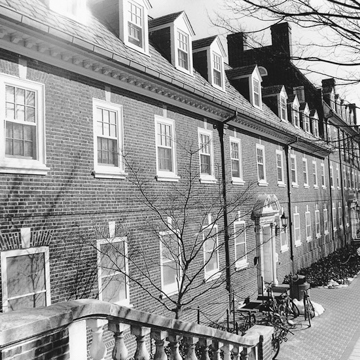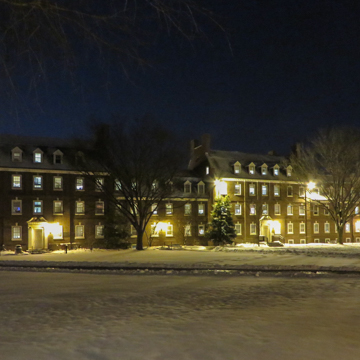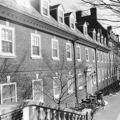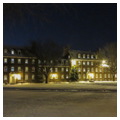The architectural development of the Green—a name alluding to historic Greens in Dover (see The Green) and New Castle—began with two buildings, this 100-student dormitory (begun November 1916) and nearby Wolf Hall (started six months earlier). It is legendary that trustee H. Rodney Sharp urged Klauder to look at Delaware architecture and toured the state with him, and Day and Klauder did publish a prospectus for the campus that illustrated the Parke-Ridgely House (DV13); New Castle's Immanuel Church (NC10) and Court House (NC16); and Old Drawyers (LN5). In truth, there is little about Day and Klauder's architecture at the university that can be ascribed to Delaware examples, beyond, perhaps, a predilection for intimacy of scale. Instead, they employed generic colonial elements long familiar to them in their practice. With its rowlike form and gambrel roof, Harter derives from well-known college dormitories of the colonial period, such as Yale University's Connecticut Hall (1752). As built, Harter differed from the presentation drawing of 1916, the entryway system used at Princeton being modified in favor of hallways and expensive Ionic porticos being dispensed with.
You are here
Harter Hall
If SAH Archipedia has been useful to you, please consider supporting it.
SAH Archipedia tells the story of the United States through its buildings, landscapes, and cities. This freely available resource empowers the public with authoritative knowledge that deepens their understanding and appreciation of the built environment. But the Society of Architectural Historians, which created SAH Archipedia with University of Virginia Press, needs your support to maintain the high-caliber research, writing, photography, cartography, editing, design, and programming that make SAH Archipedia a trusted online resource available to all who value the history of place, heritage tourism, and learning.





